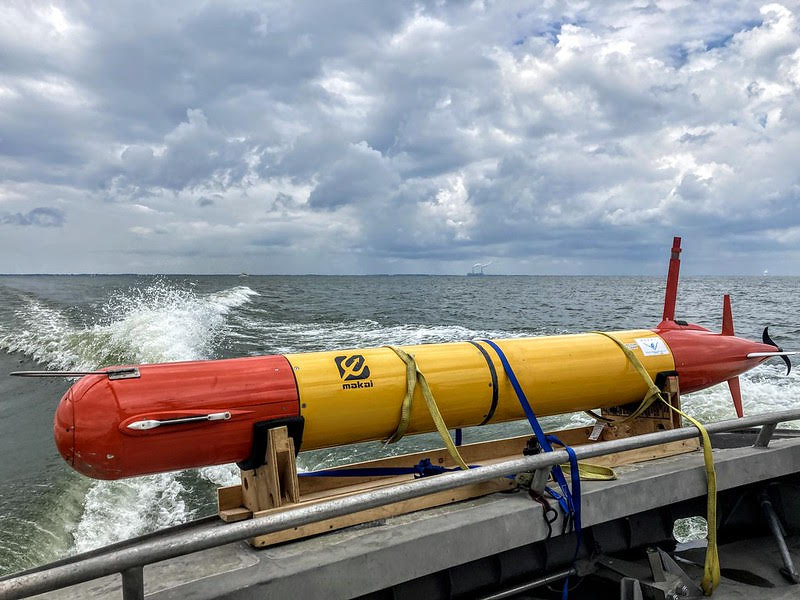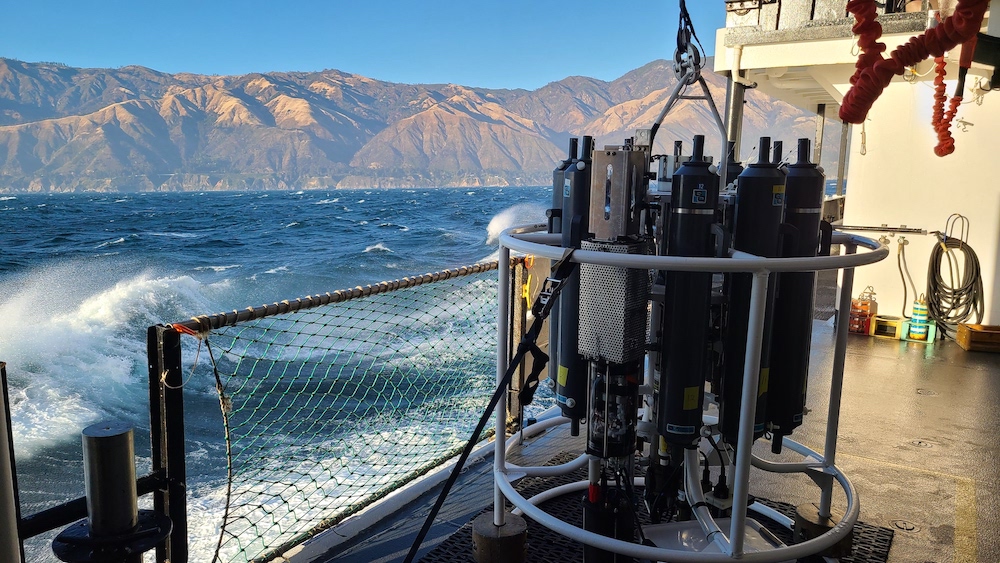Autonomous vehicles dive into some of the Great Lakes’ harmful algal blooms
Blooms of toxic cyanobacteria can impact human and ecosystem health and have led to the death of pets and livestock. Providing accurate and frequent measurements of toxins associated with cyanobacteria harmful algal blooms (HABs) is important for public health and also can impact local economies. Traditional toxin sampling is ship or shore based, and requires several people to be involved and good weather conditions. A new system developed by NOAA and partners offers a robotic alternative that could solve many of the problems associated with traditional sampling and might help develop more detailed warning systems and forecasts for lake communities.

The system, described in a new paper published in the journal Limnology and Oceanography Methods, involves the use of long-range autonomous underwater vehicles (LRUAVs) that can be equipped with a variety of instruments to study aquatic environments. In addition to GLERL, NOAA’s National Centers for Coastal Ocean Science, NOAA Ocean Exploration, University of Washington, Cooperative Institute for Great Lakes Research, and the Monterey Bay Aquarium Research Institute (MBARI) participated in the study. The system, developed by engineers at MBARI, combines the LRAUV with an environmental sample processor to assess the health of aquatic ecosystems. Scientists can deploy the LRAUV with a programmed mission to dive underwater, take water samples, analyze them while still in the lake and then quickly report back to a central computing system on a boat or back onshore.
“It would be great to have a way to quickly and accurately measure cyanobacteria toxins and reliably report on it throughout the warmer months,” said Reagan Errera, from NOAA’s Great Lakes Environmental Research Laboratory (GLERL) who was an author on the paper. “Communities in the Great Lakes love to be outside and we’d like to be able to reassure people that we know when the bacteria might be present.”
LRAUVs have previously been used for deep water sampling in the Pacific Ocean along the central California coastline. In 2021 the team went to Lake Erie to see if it could work in far shallower lake waters, too.
Lake Erie’s western basin is a vital drinking water source for over two million people along the Ohio coast. It’s also a vibrant economic hub for tourism. Millions of people flock to its shores to enjoy swimming, fishing and boating each year during the summer months. In recent decades it has also become choked with large swaths of cyanobacteria harmful algal blooms.
Not all algae cause toxic HABs and most phytoplankton are highly important to the overall health of the ecosystem as they are the building blocks of aquatic food webs. Quickly identifying when and where toxic HAB outbreaks occur can help people avoid exposure and also help communities plan ahead to stay safe. Detailed identification of hot spots might also help scientists zero in on the causes of toxic algae outbreaks.
Previous cyanobacteria HAB identification methods used both water sampling and satellite imagery to measure blooms. On average, there are only 60-70 cloud-free images obtained per year from satellites, however. And early detection of a developing toxic bloom in deeper lake waters is not possible because satellite imagery does not provide underwater images.
Errera notes that the team wasn’t sure if the 10-foot long, torpedo-shaped LRAUVs could operate effectively in the shallowest lake in the Great Lake system where water is sometimes only a few feet deep. “Taking the devices out and making them perform in the water was important.” Errera says.
The torpedo-shaped LRAUVs are equipped with sensors that can find patches to sample within the blooms by measuring for high chlorophyll fluorescence – a way of finding cyanobacteria in HABs. The devices contain cartridges mounted in a rotating carousel that can gather up to 60 water samples during a single foray into the water. The system can be used to analyze samples remotely as soon as they are taken or store them for analysis onshore in the lab.
There are still some issues that will need to be resolved in order for the system to become a system for routine measurement of cyanobacteria-producing toxin in HABs. High chlorophyll is not always an accurate indicator of the toxin. Although the LRAUVs were able to demonstrate the potential to measure cyanobacterial toxins in lakes, their large size precludes them from measuring in some shallow areas.
Errera and others will be returning to Lake Erie later this summer to deploy the same measuring equipment in an uncrewed surface vehicle with a cooling system added, to see if the surface vehicle will provide the versatility needed to measure for cyanobacteria in shallow waters.
Please also see NOAA’s 2024 HABs forecast here.
Media contact: Alison Gillespie, [email protected], 202-713-6644



